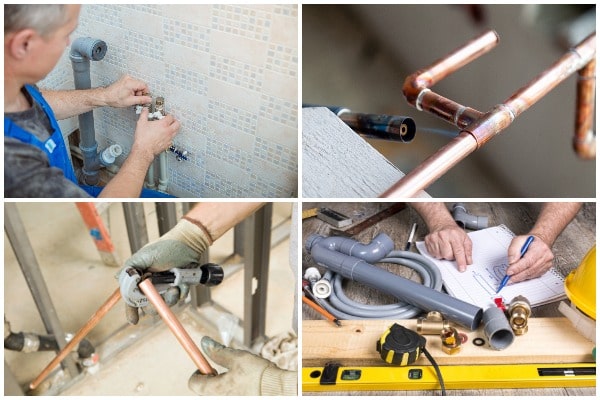In every house, homeowners are likely to face occasional plumbing issues. In most cases, local repairs are enough to deal with the plumbing problem. However, there are instances when the issue becomes extensive and frequent. In such cases, it might be time to consider repiping.
Before deciding if repiping is the solution to your plumbing ordeal, it’s crucial to understand first what it is all about. Repiping is a process where both cold and hot water pipes all over your house are removed and replaced with new ones.
Due to the extensive nature of the process, many homeowners are having second thoughts on starting a huge undertaking. Nevertheless, going through repiping in one go is a more convenient and cost-effective move than always calling in a plumber for repairs. It might be the best step to take to put a stop to costly plumbing repairs and skyrocketing utility bills.
Remember that repiping your entire house will put your water service on the sidelines, but working with a skilled professional can carry out the project with minor disruption to your daily routine.

What Happens During A Repiping Project?
In a repiping project, essentially, the professionals will remove all the current piping and replace it with new ones. In some cases, only a section of piping will require replacement. When you doubt the extent of a repiping project necessary for your home, call a professional for a thorough assessment.
Take note that this is an extensive plumbing project, especially if a whole-house repiping is necessary. Depending on the scale of a repipe plumbing project, it’ll only take a short while for a minor task, but a whole-house project can take several days to finish.
-
Before, During, and After The Repiping Project
Before the project starts, the plumbing team will cover the furniture and carpet to protect them from dust and debris exposure.
During the repiping process, the professionals will remove sections of the drywall to expose the piping. In most cases, you can choose the type of pipe. Many homeowners prefer copper pipes due to their superior heat conductivity for hot water purposes, such as dishwashers, showers, and laundry.
After the removal of all the inferior piping, the professionals will install the new pipes. The system will undergo a test to ensure that all parts of the plumbing are functional. The testing includes assessing for leaks, running the water, and checking areas where water flows, including showers, sinks, washing machines, and dishwashers. When everything is working fine, the repiping project is a successful one.
In some cases, where additional renovations are essential, such as placement of a tankless water heater or expansion of the water system to support a remodel, extra alterations might be necessary.
When everything is in place, the drywall and other materials will undergo repair, patching, and retexturizing so that everything is in its original state.
When Is Repiping Necessary?
If you’re considering a repiping project, it’s best to consult a plumbing professional to have advice on the right solution for your home. However, these are the signs that it might be time to consider repiping for your home:
-
A 50-year-old House
Way back since the mid-twentieth century, the primary material for plumbing is galvanized steel. Although galvanized steel is highly durable, it eventually succumbs to corrosion after 50 years, requiring replacement.
Remember that even modern piping options won’t last forever. With this in mind, try to monitor an aging plumbing system.
-
Presence Of Rust Or Minerals In The Water
The two characteristic indications of rust and mineral buildup are reddish-brown water discoloration and low water pressure. When rust or minerals start to build up over time, they steadily constrict the water flow, leading to a drop in the water pressure.
Although it takes time for the significant buildup to occur, there’s no other solution once you notice it but to consider a repipe. When tidbits of rust break away from the pipes, the water turns reddish or brown, affecting the water quality.
-
Multiple Leaking Pipes
An isolated case of a leaking pipe can occur now and then, but frequent or recurring leaks might indicate that the entire plumbing system needs replacement.
Also Read: Plumbing Problems? Here’s Tips and Tricks to Prevent or Clear a Clogged Drain
Although complete repiping seems like a daunting project, it’s a worthy investment by cutting down the costs of plumbing repairs and skyrocketing water bills due to leaking pipes.
Conclusion
A repiping project might involve replacing a single pipe or installing new piping in a house or business establishment. Depending on why you need a repipe job, consider it a good investment that can help save on frequent plumbing repairs and rising utility bills in the long run.